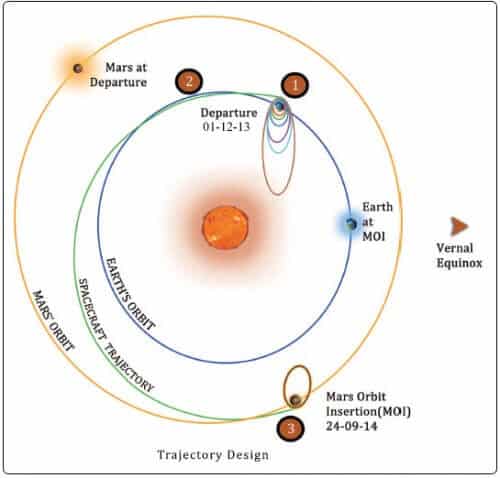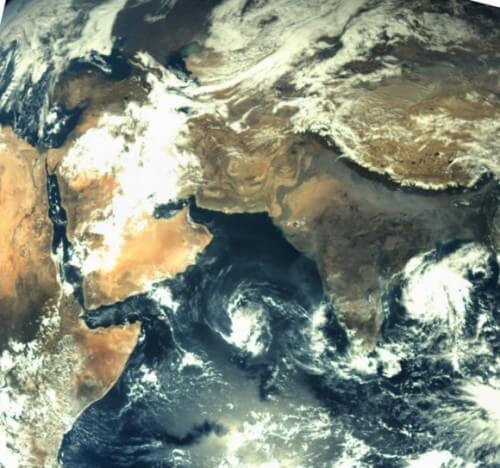
India's first Mars mission MOM successfully fired its engines yesterday (December 1) and thus freed itself from the shackles of Earth's gravity and began its year-long journey towards the Red Planet. The engines were started with precise timing for about 22 minutes. The launch is intended to move the spacecraft into an orbit where it will meet Mars on September 24, 2014 where it will probe the atmosphere and 'smell' signs of the existence of methane gas.
Ignition of the engines added 647.96 meters per second to the spacecraft's speed and consumed 198 kg of fuel. The maneuver called "The mother of all slingshots" allowed the MOM, which now weighs 1,350 kilograms, to reach escape velocity and the historic journey to Mars.
MOM is not alone in its journey to Mars, the American spacecraft Maven is flying along with it, which is also planned to explore the atmosphere.
MOM was designed and built by the Indian Space Research Organization (ISRO) at a cost of 69 million dollars, and as mentioned, it symbolizes India's first step in interplanetary flights. The agency reports that the condition of the spacecraft is good and all its systems are functioning properly.

At the same time as the ignition, the engineers tested MOM's systems and its scientific cargo. They also turned on the color camera and captured the first image of the Earth with a camera destined for Mars MOM also known as Mangalyaan, which means "Spacecraft for Mars" in Hindi. The spacecraft was launched smoothly on November 5 aboard India's four-stage Polar Satellite Launch Vehicle (PSLV) from the Satish Dhawan Space Center in Srikarikota. This rocket does not have enough power to launch a spacecraft to Mars, so the spacecraft circled the Earth in higher and higher orbits using small ignitions each time it reached the height peak, until yesterday's ignition which, as mentioned, completely took it out of the control of the Earth's gravity.
To the article on the Universe Today website

4 תגובות
Haim Mazar - thank you very much
Shimmy
If I'm not mistaken, the Americans used a slightly more complex technique and the flight lasted more than two weeks. The use of this technique comes from the goal of saving fuel. On the surface it sounds cheaper. I'm not sure. If a spacecraft flies to the moon for two weeks instead of two and a half days, then the control center in Houston has to operate for additional days until the spacecraft reaches its destination, and this prolonged activity in Houston also costs money. If you would like to know more about these costs, the appropriate address is to contact the NASA Budget Division and I am not saying this as a joke. I have no connection with NASA's costers. If they answer you that is another question.
Haim Mazar - do you know the difference in the costs of the 2 options?
Please pay attention to the sketch showing the changing geometry of the spacecraft's orbit as it orbits the Earth. The Indians use a spiral movement path. The spacecraft is put into an orbit with a large eccentricity around the Earth. When the spacecraft approaches Aphiga, its engines are activated, moving it to an orbit with greater eccentricity. This technique is used several times until the spacecraft reaches the point where it is freed from the Earth's gravity and flies to its destination. This is the technique used by the Chinese, Indians and Japanese when they launched their spaceships to the moon. Such a flight can last between one and two weeks. For comparison. All the American and Russian spacecraft that were launched to the moon in the 60s did so in 65 hours. The Apollo spacecraft also reached the moon and reached it in 65 hours. The reason for these differences is due to the power of these launchers. They are stronger. India, China and Japan do not yet have launchers powerful enough to fly directly to the moon. For this reason, the spiral coffee track is used.